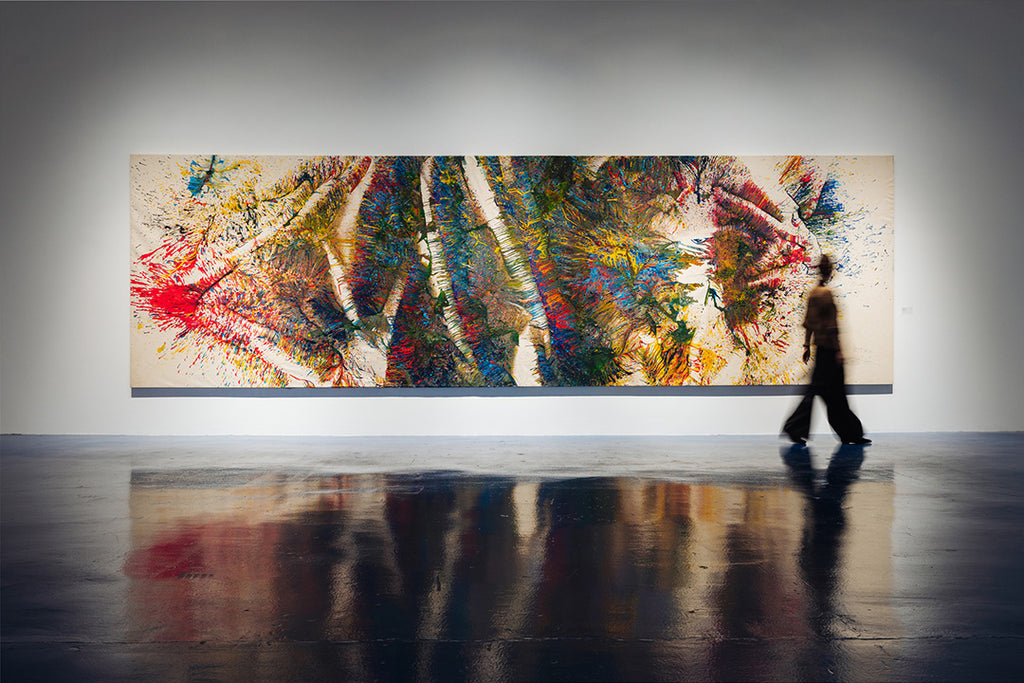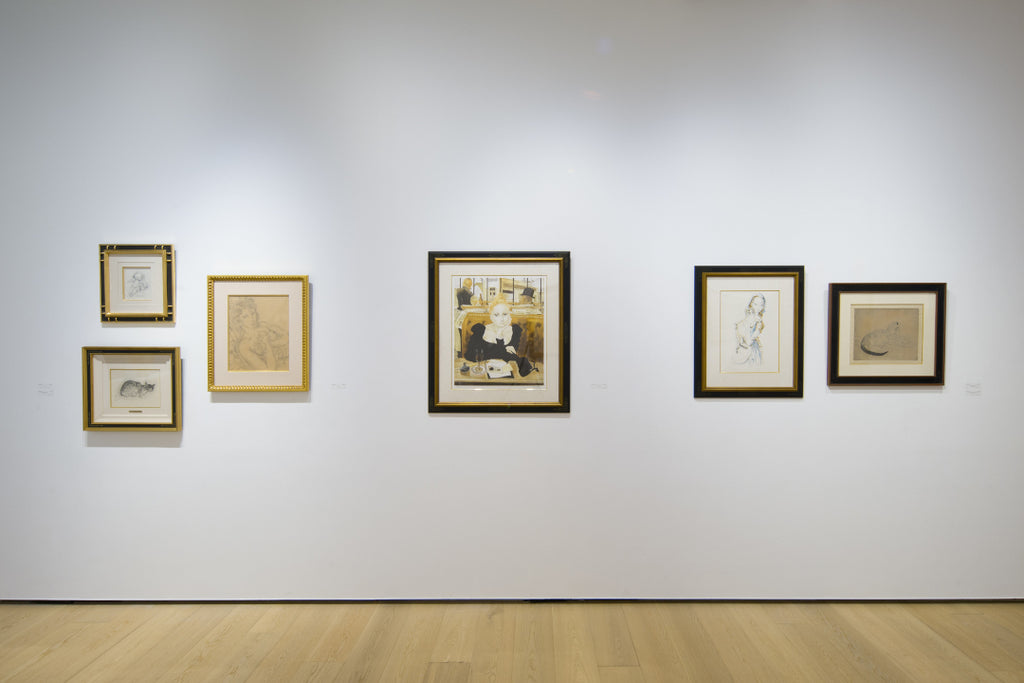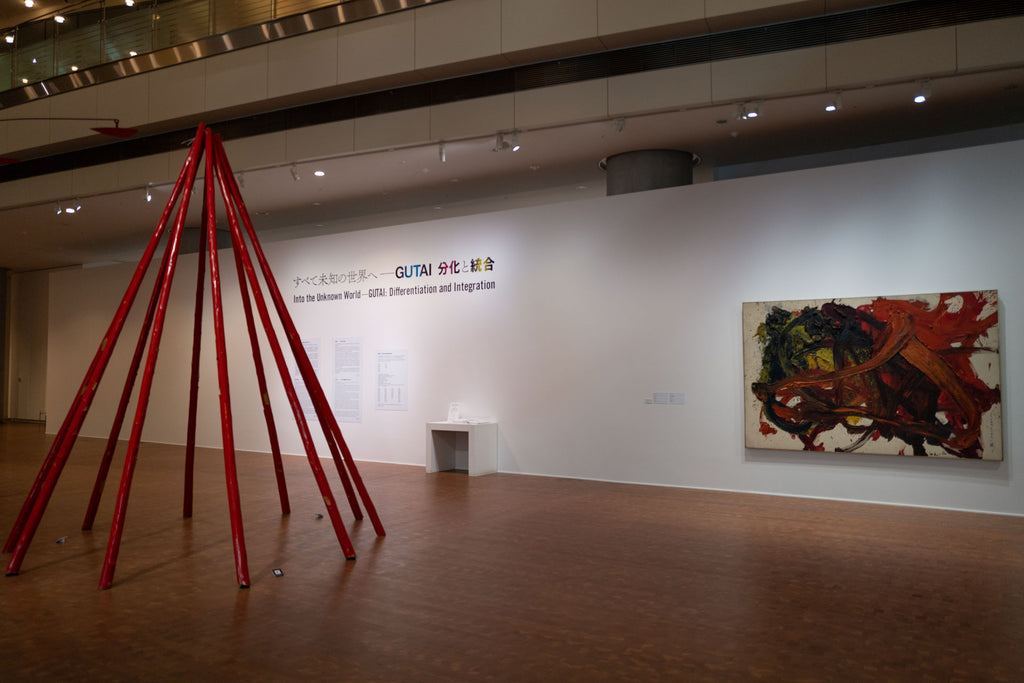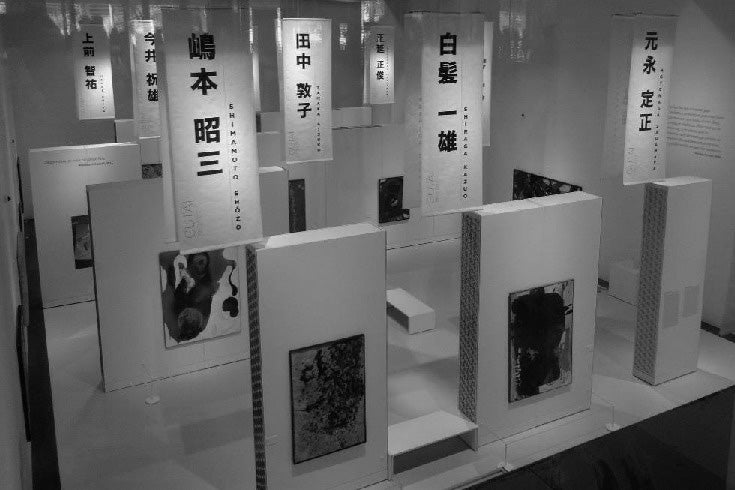ARTICLES
Innovation and Tradition: The Action Painting of Kazuo Shiraga
GUTAI STILL ALIVE 2015 vol.1
21/35

Kazuo Shiraga
A project evolving the digitized archive of the book, “GUTAI STILL ALIVE 2015 vol.1”. The 21st edition features Kazuo Shiraga, an artist who has received worldwide acclaim as an action painter. Curator Shoichi Hirai talks about the ideas and traditions hidden behind Shiraga's innovative style of using his bare feet to paint on a canvas on the floor while holding onto a suspended rope.
Innovation and Tradition: Kazuo Shiraga’s Action Painting
Shoichi Hirai
Curator, the National Museum of Modern Art, Kyoto
Holding on to a rope hanging from the ceiling, and swinging, he applies, with his bare feet, paint to the canvas spread on the floor. Kazuo Shiraga is known internationally as such an action painter.
It was in 1954 that Shiraga invented this unique method. He studied Japanese traditional painting at what is today the Kyoto City University of Arts and later shifted to Western painting. He was ardent to create innovative painting that would match the postwar new era. He belonged to Shinseisaku Art Society, and started a “Zero Kai” avant-garde group with his fellow society members. They strived to break down the conventional ideas of painting. Shiraga wondered if he could make paintings without the concept of composition or color, or “paintings like sea slugs.” First he filled the pictures with traces of red paint only, spread with his fingers and palms. Then, in order to develop the method even more radically, he worked out his action painting using bare feet.
In Japan, Shiraga’s action painting is often described as automatism. That is, Shiraga painted unconsciously sliding on the canvas, without the restraint of reason. It is thought that such a stance was significant art historically. But it’s erroneous.
When he began painting with his bare feet, Shiraga in fact tried to put himself in a state of unconsciousness while painting, for the purpose of denying the conventional pictorial compositions or colors. Moreover, after he joined the Gutai avant-garde group – led by Jiro Yoshihara – in 1955, he found pleasure in the very act of expressing using his body. He even came to think that what’s important was the process of acting (painting) and the pictures resulting from it didn’t have to remain. (Therefore early works of his action painting were done on paper instead of canvas, and few of them remain until today.)
However, if you try to do the same thing as Shiraga, you will see that no “picture” will be made if you just slide on the picture surface in a state of unconsciousness, at random. Shiraga deliberated which way to go – to do away with painting and pursuing expression by the body, or to keep being a painter. And he chose the latter. He established his own method of making pictures balancing the state of unconsciousness and the painter’s consciousness.
Shiraga’s works of action painting have some kind of characteristics in common. The lines made with his bare feet don’t run away outside the picture but are brought back to the center, accumulate and form a mass. Full of vital, explosive energy, they bring about force and tension. This is one of the formal characteristics of Shiraga’s action painting.
On the other hand, we have to pay attention to the pictorial world materialized in this painting method.
In its very early stage, works of Shiraga’s action painting didn’t have titles and were monochromes in red. As the method got more established, other colors were added, as well as titles.
In 1959 Shiraga started the “Water Margin” series. At that time, in the Gutai group, to which he belonged, the group leader Yoshihara forbade the members to put a title to a work because he thought a work of art has its proper world. But Shiraga sought special permission from Yoshihara to give the names of some heroes who appear in Water Margin to his works as titles, on the pretext that titles were necessary in order to distinguish a work from another. However, if we read Water Margin carefully, we can see that what Shiraga explained to Yoshihara was a mere excuse, and that the images of the individual heroes in the novel whose names were used as the works’ titles were loosely related to the actual works’ images. That is, we can say that the titles of Shiraga’s action painting works were put in accordance with the images the painter vaguely had before painting them or the images he felt after the paintings were completed.
What’s important here is that such images are strongly associated with Chinese classical literature such as Water Margin, incidents in Japanese history such as the Battle of Yashima and the Siege of Osaka in Winter, or esoteric Buddhism Shiraga embraced. The origin of this traces back to the cultural background of the city of Amagasaki in Hyogo Prefecture, where Shiraga spent most of his life, and the surroundings of his childhood.
Unlike other cities in the area between Osaka and Kobe such as Ashiya and Nishinomiya which developed as bedroom suburbs since the early 20th century, Amagasaki prospered as a trade center between Kyoto and Osaka since the Heian period (8th-12th centuries). In the Edo period (17th-19th centuries) the city was under the rule of the Amagasaki domain and there flourished a unique townsfolk culture combining Kyoto’s sophistication with Osaka’s popularity.
Shiraga was born as the successor to an old dry goods store in Amagasaki, and grew up amid colorful clothes and ukiyoe, as well as classical literature, noh, bunraku (puppet theater) and antiques that were popular among rich merchants in that period. Shiraga’s sense of color and aesthetics had been deeply influenced by such premodern culture.
An innovative painting style denying conventional pictorial compositions and colors, and a pictorial world rooted in Oriental tradition that’s apparently opposite to innovation. I already mentioned that the balance between unconscious and conscious made formal characteristics of Shiraga’s action painting. But, more essentially, his artistic originality lies in the charm of the combination of innovation with tradition, modernity with premodernity, seen in the relationship between his method of painting and the images it brings forth.
Those who noticed these merits sensitively and appreciated Shiraga’s action painting early were Westerners. It might be too late, but we Japanese should also start regarding the works of his action painting not as mere traces of action but as paintings with subject matter.
(Mothly Gallery, January 2014)



